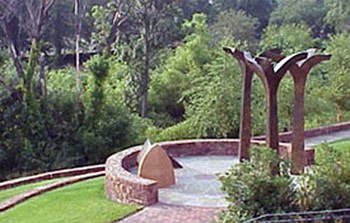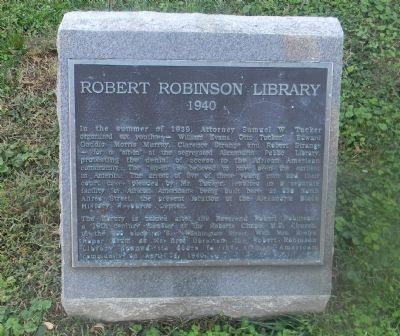Alexandria Black History Museum
Introduction
Text-to-speech Audio
Images


Landmark for the Robert Robinson Library. The library was built as a result of the alleged first American "sit-in".

Backstory and Context
Text-to-speech Audio
The Alexandria Black History Museum opened in 1983 to the public under the name Alexandria Black History Research Center and was completed in 1989 as a museum. The Museum's main initiative is for "preserving the history of Alexandria’s African-American citizens, as well as providing a forum for issues of concern to all African Americans". The Museum is broken into three parts, the museum which incorporates all the local history, the Watson Reading Room that provides an area to learn about African American culture, and the African American Heritage Park that "offers a place for celebration, commemoration, and quiet reflection", according to the City of Alexandria site.
The Museum's greatest attraction is the Robert Robinson Library which is the site of the segregated library resulting from a "sit-in". In 1939, six children, an attorney as their organizer, engaged in a "sit-in" at the Alexandria Public Library in protest to their segregation policy. This was the alleged first "sit-in" protest in the United States. The attorney, Samuel Tucker, was an advocate for African American rights and defended the children in court. A segregated library was established as a result in the very place the Alexandria Black History Museum sits.
Another notable fact about the museum is it sits in the Parker-Gray Historical District of the city, named after the only high school in the area that African Americans could enroll in Alexandria before 1965. The Parker-Gray School collection is also a part of many collections of the museum including African American churches, African Objects, Moss Kendrix collection, documents, photographs, and some recently added pieces from the Obama presidential campaign. All if not most of the collections highlight the local history in Alexandria.
